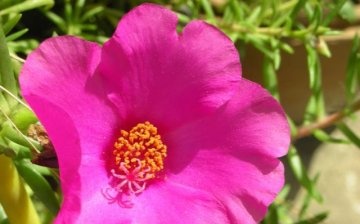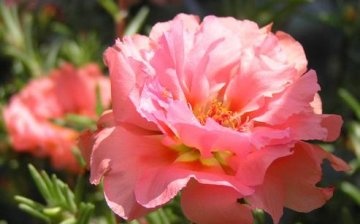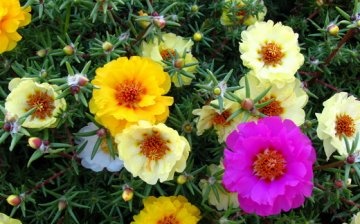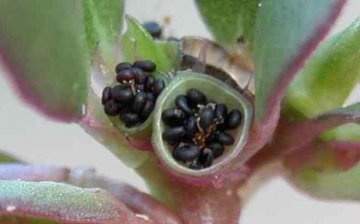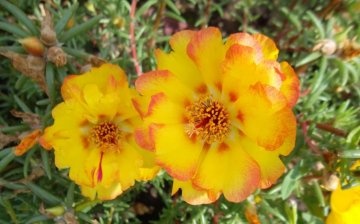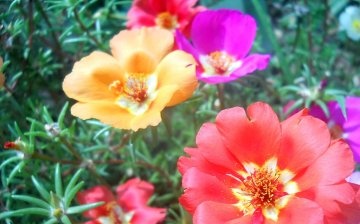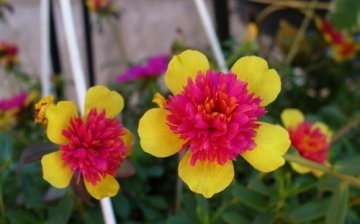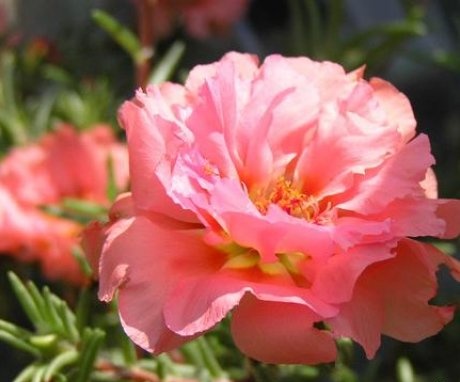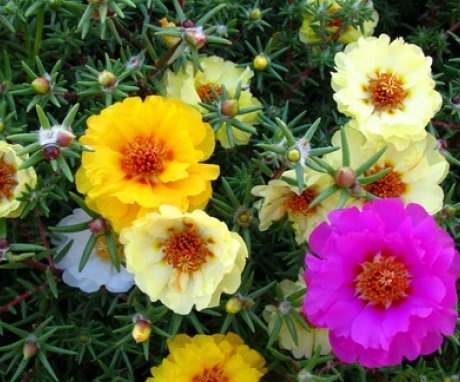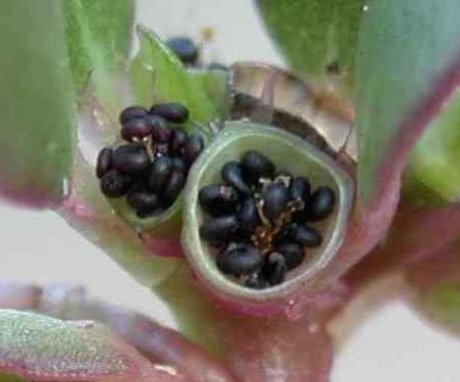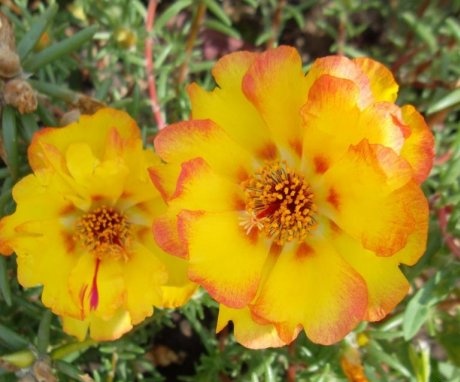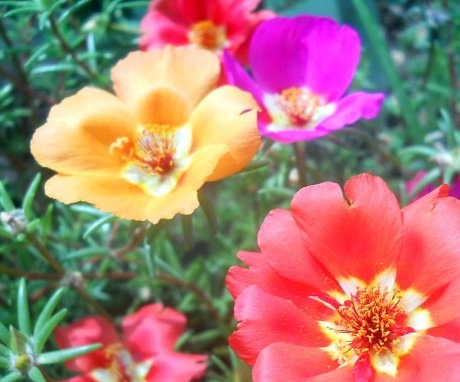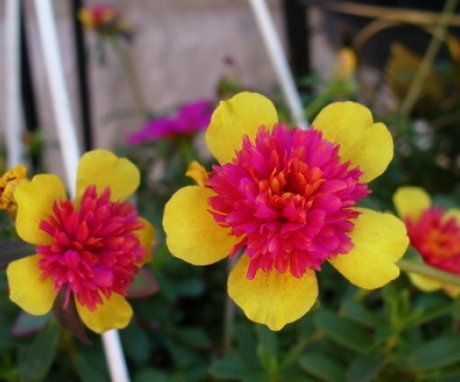Purslane: description, growing from seeds and care
Purslane is a fairly common plant in our country. The plant got its name from the characteristic way of opening the seed box. The people call the purslane a rug for its ability to creep over the surface, creating a carpet-like covering from bright colors. It is the carpet that provides the plant that makes it unforgettably beautiful and graceful in appearance.
In the form of a weed purslane widespread in Central Europe, and also found on both American continents. Many gardeners use purslane as an ornamental decoration for their gardens. Purslane is quite unpretentious to care for and has a small amount pests... This quality of the plant allows it to be grown on the most fertile lands.
Content:
- Through the pages of history
- Purslane description
- Growing purslane from seeds
- Plant diseases and pests
- Purslane care
- Useful qualities of the plant
Through the pages of history
Plant purslane mentioned in the Middle Ages in Europe and England. The father of medicine - Hippocrates began to use this plant to get rid of insomnia, heal wounds, as a means of helping to neutralize the bites of poisonous snakes and many other cases. The Arabs have long considered purslane a "blessed" plant. In addition to the Arabs, many residents of the eastern states shared this opinion.
This plant came to Europeans rather late.
Throughout the 17th century, purslane was the main vegetable crop among the French, from where it spread to other countries. Purslane dishes are still popular with the local population.
Purslane description
The genus Portulac includes about two hundred species of plant organisms, which are represented by annual or perennial grasses, including succulents.
Large-flowered purslane is very popular among gardeners.
Large-flowered purslane is an perennial creeping form. In height, this plant can reach up to twenty meters. Experienced gardeners plant purslane around curbs and in gardens.
Features of the plant:
- The plant has rather fleshy leaves, small, cylinder-like in shape.
- The color of the leaves varies from green to reddish. The plant has simple cupped flowers.
- The reason for this is the five fused terry petals. They can be white, pink, cream, yellow, bright orange or red.
- Sometimes on the petals there are subtle shades of a different color scheme.
City dwellers grow the purslane plant in vases, balcony boxes, pots, window containers, or hanging baskets. With this plant, you can easily decorate any garden or flower bed. Purslane is an object of adoration for ladies and gentlemen. Often, its flowers are included in the most exquisite bouquets and flower arrangements.
Growing purslane from seeds
Purslane is a very light-loving plant, so it should be planted in areas with good sunlight. If there is not enough light in the place where the purslane grows, then the plant may not bloom.It can be easily grown in an apartment by placing a pot with a plant on the windowsill... The plant loves the flow of fresh air, so it can be placed on the balcony as well.
For purslane, only positive ambient temperatures are required.
Therefore, it is worth monitoring changes in the temperature background around the plant. A sharp drop in temperature can lead to the death of the plant. Purslane loves a hot climate, so if you grow it in a temperate zone, you should resort to the greenhouse method.
Secrets of growing purslane:
- It is best to buy purslane seeds in advance, even in winter. When buying, make sure that there is no damage to the integrity of the package with seeds, otherwise they may get wet or crumble. Be sure to pay attention to the expiration date of the seeds, otherwise you will not see beautiful purslane plants.
- Closer to spring, purslane seedlings appear in stores, you can also use it for planting at home.
- March is best suited for sowing.
- Flower pots are ideal seeding containers.
- Previously, a small amount of finely ground gravel is placed on the bottom of the pot, which will act as a drainage layer. In addition to gravel, sand is excellent for these purposes.
- Fill the rest of the pot with the soil prepared for sowing. You can put some charcoal or sand in it.
- Then this soil is watered, thus providing it with the best degree of moisture. As glaze it is best to use a liquid at room temperature, as it will moisturize the soil best and will not help cool it.
- Having prepared a container for planting and seeds, proceed to planting. Seed material is placed using thin wooden sticks, slightly pressing into the ground.
- The distance between the seeds is equal to one centimeter. By maintaining a distance when landing, you help to eliminate additional picking seedlings.
- Seeds are sown in small depressions in the soil and covered with a small amount of it.
- Then watered. Watering is necessary for the plant to obtain an abundant amount of leaves and flowers during the growing season.
- Do not create the effect of "stagnant water" in pots, this can cause the development of pathogenic microorganisms on the plant.
- Watering should be done in hot weather, giving this strength for growth.
- It is not necessary to use cold water for irrigation in hot weather, this can cause some delay in the growth of plants.
Plant diseases and pests
Purslane has few pest enemies and is resistant to damage from various diseases... But, a fungal organism of the genus Albugo portulaceae can settle on it. At the same time, characteristic stains, especially on the surface of the leaves, and there may be deformation of the shoots. Gardeners, noticing these changes, remove the damaged parts, and the areas affected by the fungus and the plant itself are treated with copper-containing fungicidal agents.
Young and green shoots of the plant can become the target of aphids, especially during the active growing season.
If you notice the appearance of these harmful insects on your plant, it is worth immediately treating all the leaves with insecticidal preparations. You can buy them in specialized flower shops.
In addition to aphids, thrips can cause great harm to the plant. Data presence pests can be identified by the appearance of characteristic silvery specks on the leaves. Thrips adore purslane litter, which can lead to oppression and death of the entire plant. When these pests appear, the vegetative organs of the plant should be immediately treated with special insecticides. In general, you should carefully look through the leaves and flowers of the plant for the presence of pests, otherwise there will be no abundant flowering.
Purslane care
Purslane is quite picky about the amount of light.In this regard, it is necessary to mark the plant closer to the windows or in the warm season on the balcony. Thanks to the light rays, the plant forms flowers.
The optimal temperature background for the plant is the range from 20 to 26 ° C.
Watering for the plant needs moderate, depending on the degree of drying of the soil. Do not allow the soil layer in pots to dry out, as this can cause the plants to wilt.
The purslane plant is not demanding for feeding and can grow on non-fertile soil horizons. This quality is very fond of gardeners who grow it on various poor soils. Planting purslane seedlings is carried out when it reaches five centimeters in height and about ten leaves appear on the stem.
Useful qualities of the plant
Known for more than a century, the plant has many qualities useful to humans. Let's consider them in more detail:
- Firstly, the inhabitants of Rome and Greece have used the green mass of the plant as a preparation of various dishes for a long time. It was from these countries that the rumor about the use of purslane for food spread. Following this example, residents of other states also began to prepare dishes with the addition of purslane. Today, purslane is added to various salads with a predominance of a vegetable component, and mixes. Fresh purslane leaves give these dishes a special flavor. Purslane is indispensable in the preparation of all sorts of first and second courses.
- Purslane was also widely used for medical purposes. Even healers, and the healers of antiquity noticed medicinal properties purslane. The writings of Pliny and Hippocrates speak of the miraculous properties of purslane in the treatment of various diseases. The inhabitants of the East idolized this plant.
- Green purslane leaves are rich in various trace elements. It contains potassium, iron, zinc, manganese, magnesium and even calcium. Thanks to this bouquet of elements, purslane has valuable useful properties. Fresh leaves should be eaten purslaneso that the destruction of their useful compounds by heat treatment does not occur. In addition to the listed microelements, purslane contains tocopherol, carotene, phylloquinone, ascorbic and nicotinic acids.
More information can be found in the video.



